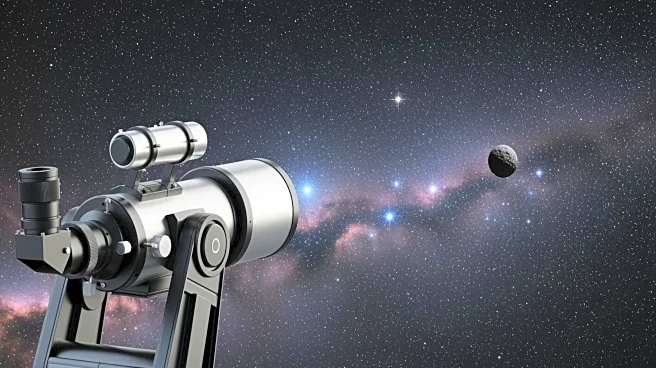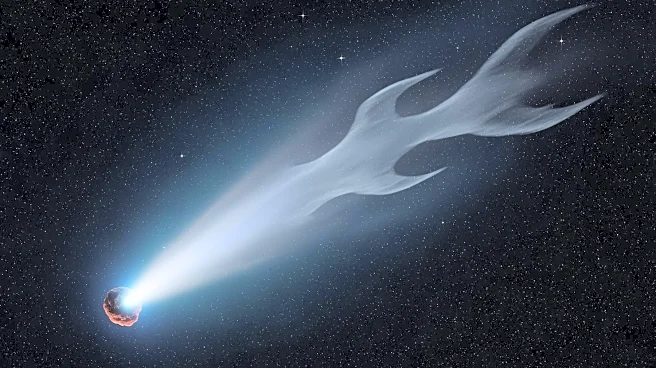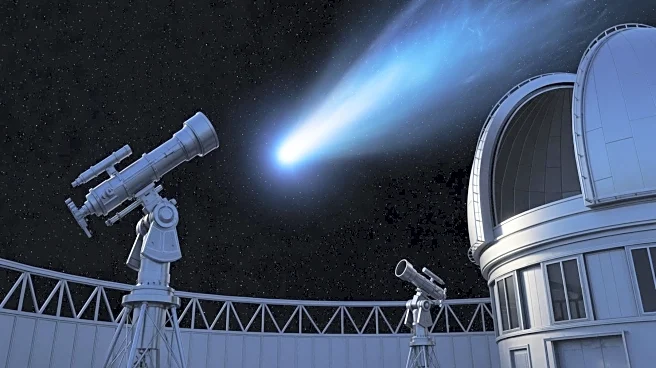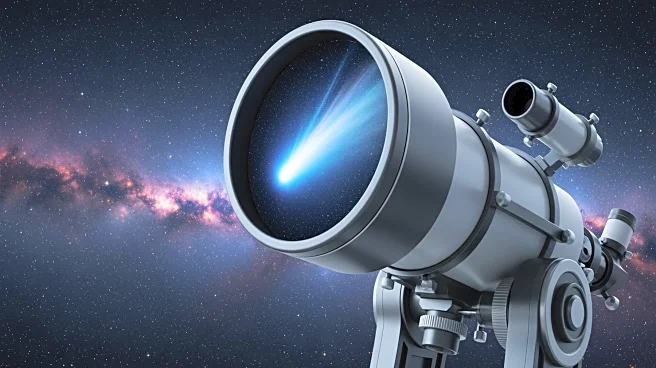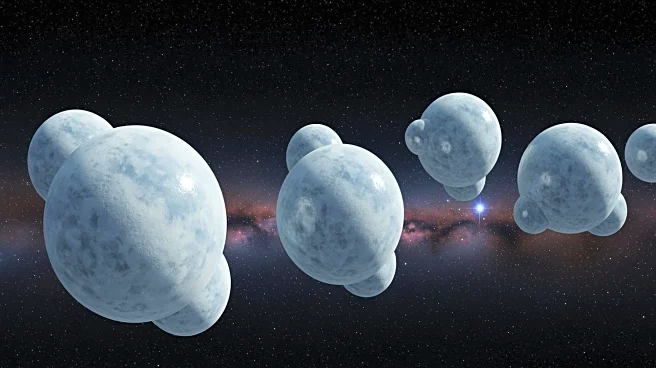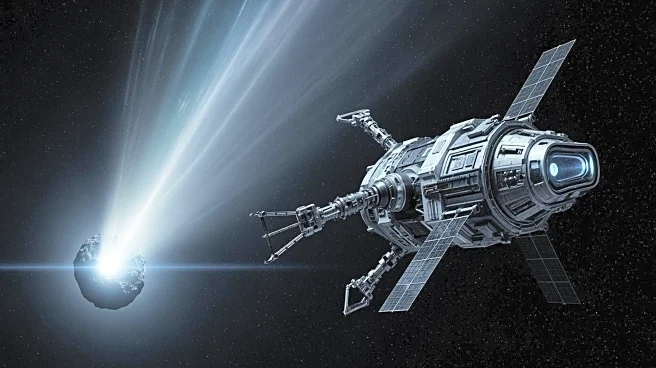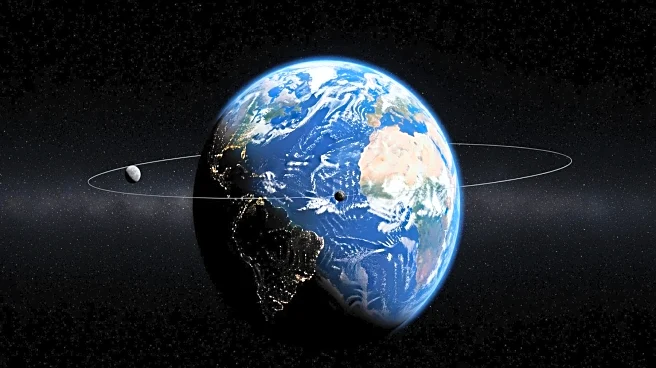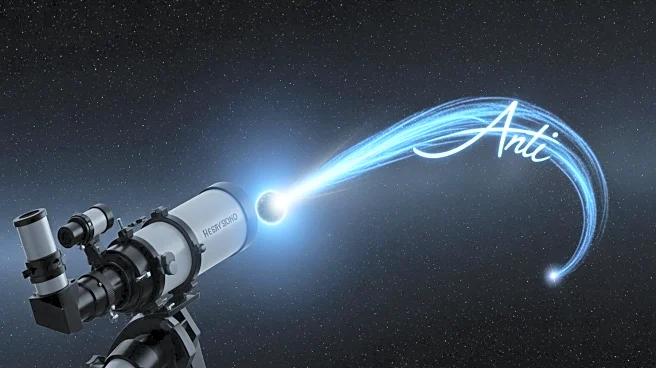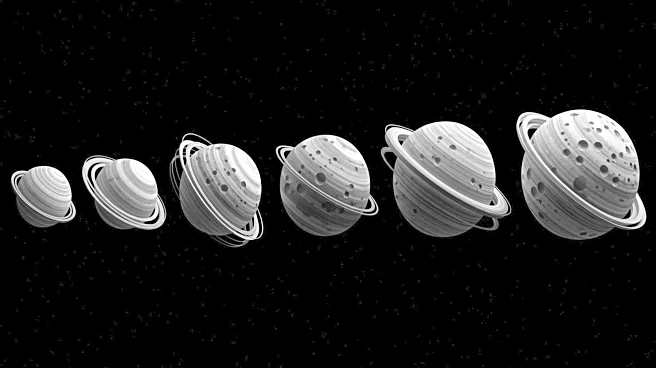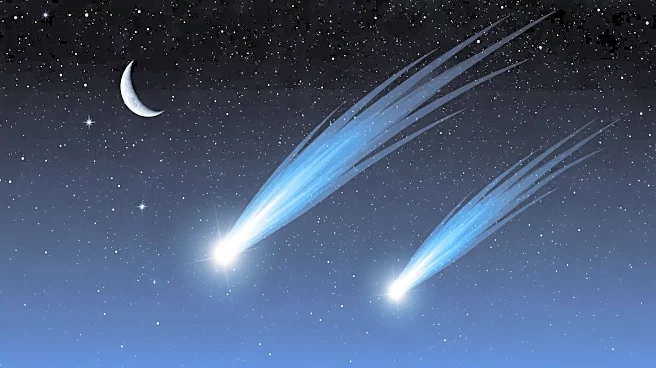What's Happening?
NASA has captured new images of the interstellar object 3I/Atlas, revealing changes in its tail. The comet, currently obscured by the sun, is not visible to Earth-based telescopes. Harvard Professor Avi
Loeb discussed these developments with NBC News, highlighting the significance of the images in understanding the comet's behavior and trajectory. The images have not yet been released to the public, but they are expected to provide valuable insights into the comet's composition and movement as it continues its journey across the solar system.
Why It's Important?
The observation of 3I/Atlas is crucial for astronomers as it offers a rare opportunity to study an interstellar object. Understanding the changes in the comet's tail can provide insights into its composition and the forces acting upon it. This information is vital for advancing knowledge about objects originating from outside our solar system, potentially influencing future space exploration and research. The study of such objects can also enhance our understanding of the universe's formation and the materials that exist beyond our solar system.
What's Next?
As 3I/Atlas continues its journey, astronomers will likely focus on tracking its path and analyzing the data from the new images. Further observations may be possible once the comet emerges from behind the sun, allowing Earth-based telescopes to capture additional data. The scientific community will be keen to study these findings to refine models of interstellar objects and their interactions with solar forces. Continued research may lead to new discoveries about the nature of these celestial bodies and their impact on our solar system.
Beyond the Headlines
The study of interstellar objects like 3I/Atlas raises questions about the origins and evolution of celestial bodies. It challenges existing theories and encourages the development of new models to explain their behavior. The ethical considerations of space exploration, including the potential impact on other celestial bodies, are also part of the broader discussion. As technology advances, the ability to observe and analyze such objects will improve, potentially leading to groundbreaking discoveries in astronomy.
